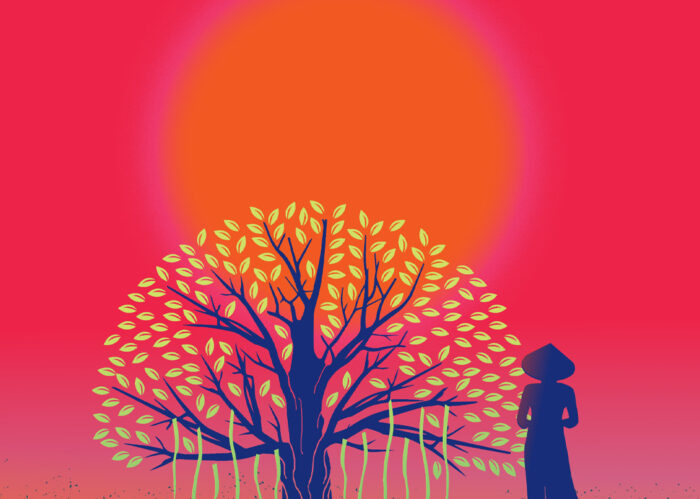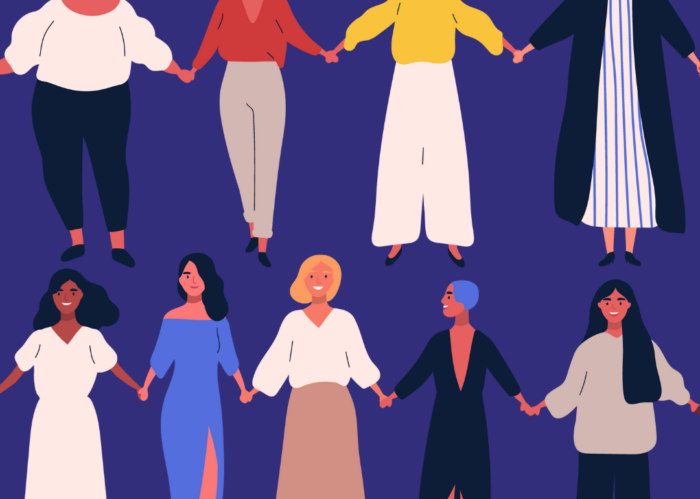On Writing: Manuel Muñoz and Nina Revoyr
Manuel Muñoz, author of What You See In The Dark, and Nina Revoyr, author of Wingshooters, talk California, love letters, ghosts, and being your own harshest critic.
.
NR: Manuel, I’m so excited to be having this conversation with you! It’s not quite as much fun as hanging out with you in person, but it’s a pretty good substitute.
Let me start with the obvious. You’ve published two beautiful, very well-received short story collections, Zigzagger and The Faith Healer of Olive Avenue. What was it like to go from writing short stories to writing a novel? Was it inherently more difficult, or was it a natural progression from stories?
MM: Admittedly, this would be even better over a drink, but we can manage!
Like a lot of writers, this isn’t my first novel, only my first published one. I’ve tried several before, only to be faced with real messes I couldn’t quite clean up. This isn’t to suggest that stories are any easier, but I always feel more in control with a story. I can easily spot my own failings before they refuse to resolve themselves within a narrative. With this novel, I had to ride on faith that my idea might actually come into focus. I’m not sure I like that uncertainty. I like the miniature, the feeling that I can see everything in the room.
You’ve just published your fourth novel, Wingshooters—in fact, all four of your books have been novels. I suspect that novelists have a more natural grasp of thinking broadly, taking an idea and knowing its scope. Is this the case with you?
NR: You give novelists—or at least this one—too much credit!
Writing a novel for me is still about uncertainty and faith. I don’t generally have the whole broad scope of a book figured out when I start—and if I do, it’s invariably wrong. What I start with are questions—about a character, about a situation, something that makes me wonder, “What would happen if…?” And the trick is finding a set of questions that will obsess me for the four years or so it takes to write the book. Still, with each book, something has happened halfway through. I’ve found a new narrative, a new set of themes or implications that weren’t clear to me at the beginning. That’s actually when the book starts to have a life of its own—and when the writing becomes fun again.
I do think you’re right, though, about me being drawn to the broadness of novels. I love to read short stories, and I envy you for being able to write them. But in terms of my own work, the larger landscape of a novel lets me stretch out a bit more, lets me breathe. I like returning to the same place and characters week after week, year after year, filling out the personalities, the neighborhoods, the history. I like to throw myself into a completely different world, one that’s more interesting and satisfying than the real one. And one way or another, the writing always has to do with yearning, especially about a time or a place.
Which reminds me—we both grew up in California, and we’ve both written books that are set here. But I moved back after a decade away, and you’ve settled in the Southwest after many years on the East Coast. How does living outside of California affect the way see and write about it? How are you able to create such immediacy in terms of place?
MM: I’ve said many times that I’ve remained committed to representing the Central Valley on the page, hopefully for the rest of my writing career. Reading your response, I was struck by how very opposite it is from my tendency to keep investigating a landscape, maybe with so much scrutiny that the observation begins to change the thing itself. I fulfill that thirst for other places by reading, by actively seeking out work that is different from my own in both geographical and emotional terrain.
Since my entire immediate family still lives in the Valley, I have frequent chances to get back there and assess what has changed, or to drive around and test my memory of streets and neighborhoods, or even weather at particular times of year. I think the biggest revelation for me in the past ten years is that I have started to look at landscape, as well as character, in relation to time. I don’t think I ever gave myself the chance to manipulate time in a story arc—I always kept the time frames very tight. When I saw writers who did it so effortlessly (like Alice Munro and Joan Silber), I studied them and a new tool emerged.
In the novel, because it was set primarily in late 1959, I kept an eye on how and when the narrative was going to jump ahead to key moments (1960-63, 1968, and 1972) and then tried my best to refract the landscape. But I have to admit, it was difficult, as things are when we really try them out for the first time.
Your work has shifted so radically in relation to eras. It suggests to me that time/time periods grab your attention even more than place. Am I wrong about this? Or this something about the Wisconsin of Wingshooters that inspired the yearning you wrote about earlier?
NR: OK, so just as I was reading your reply, my phone rang and the caller ID said the call was from Fresno. I don’t usually get calls from the Central Valley, and we’re having this crazy stormy day in L.A., and I had this weird feeling that it was one of your characters via The Twilight Zone or something. (It wasn’t.)
It’s interesting what you say about seeing a place at intervals, and the perspective that provides. I think for me, writing about eras or time has to do with achieving a kind of distance that I don’t have physically. It’s hard for me to write about a place when I’m actually in it—it’s kind of like trying to write a love letter to someone when they’re sitting in the room with you. With my first book, I was living in Japan and upstate New York, and I wrote about Los Angeles out of that yearning I mentioned before, the homesickness. But after I moved back, the easiest way for me to get the kind of perspective I needed was to go farther back in time. So I went back to the 30s through the 60s with Southland and the 1910s and 20s with The Age of Dreaming.
With Wingshooters, I was excited about the chance to write about a completely different place—the rural Midwest. There is definitely some yearning at play, specifically for a kind of relationship to the natural world. Although I live in the city, I’m happiest roaming around in the country. But I was also trying to capture something about being “other”—specifically, in this case, about being a mixed-race immigrant kid in an all-white town. And I wanted to explore a particular kind of character. The narrator’s grandfather is a blue-collar man’s man, a hunter and an ex-baseball player who is totally prejudiced. Yet he’s also the most loving and protective presence in the granddaughter’s life. That seeming contradiction, the mixture of admirable and terrible qualities in the same person, was intriguing to me.
Which leads me to this—what do you start with when you’re conceiving a new story or novel? Character, setting, story? What’s that initial impulse that grabs you and makes you sit down to write?
MM: I was very taken by your mention of a love letter, and even more curious when I considered some of the tumultuous and contradictory nature of your characters (as you mentioned earlier with the grandfather). I see the attraction: I’m drawn to characters like this because it’s an exercise, for me, in practicing forgiveness in my own life. Somehow, by taking a character through the pacing of events and sticking close to his/her interior, I like to think I’m taking a small step toward understanding why people in my own life have made terrible decisions, especially ones that are self-destructive. I’ve noticed in my later stories that I was ready to write when I knew a character was sorting something out and already knew the possibilities—yet still chose one path in particular. They have, in effect, created their own aftermath.
Can I ask you to step back and explain how characters like the grandfather demand that “love letter” voice that you talked about? What do you mean? Does this affect your choice of first vs. third? If so, how?
NR: I do think that all my books are love letters in one way or another, even if they contain a lot of darkness.
But to me, truly loving something means seeing it with open eyes, which means recognizing its shortcomings as well as celebrating what’s great about it.
But now I’m intrigued by that idea of characters creating their own aftermath. How does that concept relate to the people in your new book? Another question: one of the main characters in What You See in the Dark, the Actress, is Janet Leigh. What was it like to enter the head of a famous real-life person? What were the challenges and pleasures, and is there a special responsibility, as an author, in rendering a real-life person as a character?
MM: For me, the character of Marion Crane is the quintessential ghost presence. Her construction is essential to understanding how, even in death, a character can continue to heavily influence a plot. What I mean by “aftermath” is really an upending of the dictum about life “going on.” It does, indeed, but usually with the urge from those around us to forget the past. Characters who are haunted by the past are the most urgent to me: something has yet to be resolved. And isn’t that the engine of every plot?
Books work that way with me, too. What is calling me, after all, to pull a book off a shelf and reread? Ghosts, love letters, haunting presences—something attracts me to revisit key moments, like the final argument between Nel and the title character in Sula or the last reckoning at the end of Atonement.
NR: Yes, I agree about haunted characters. I was blown away by J.D. Salinger’s Raise High the Roof Beam, Carpenters, where the humor of the story just increases the pathos because we know the main character is dead. All of Salinger’s stories of the Glass family are built around this essential absence, the loss of the eldest brother, Seymour. And in Beloved (Toni Morrison, again!), the haunting is personified, the lost baby girl comes back to life. All of these characters are haunted not only by the deaths of their loved ones, but also by their own second-guessing and regret. As you said, these folks still have things to be resolved.
But is anything ever really resolved? Right now I’m deep into reading Andrea Barrett’s stories for the third time, where the discoveries, letters, and chance encounters of one era completely shape what happens in later generations. Great stuff.
Let’s shift gears for a second. We’re doing this in the midst of March Madness, and we’re both big sports fans. As you know, I played basketball in high school and college, and I think the discipline of playing sports, having to show up every day at practice whether I felt like it or not, totally influenced the way I approach the work of writing. Do you have any other interest or discipline that influences your writing?
MM: Not directly, but the temptation here is to talk tennis, and I know exactly where you’re going with this. I was never on a team, but when I took tennis lessons, I was surprised by how quickly and sharply my skills grew, and how the coach showed me how to play to my strengths. I could see where “style” came from: there are superb, natural talents, and there are those who are good by the tenacity of their practice. I love that! And it’s so true of writers, as well, don’t you think?
Plus, sports gives me a chance to root for the underdog (just as I do for the small presses and all their recent attention from the National Book Awards, the Pulitzers, and so forth.) So, go VCU! Who’s your pick?
NR: VCU for the guys. But we can’t forget the ladies! I love UConn, but I have to go with Stanford.
-
Overall Score
Reader Rating: 0 Votes





“But to me, truly loving something means seeing it with open eyes, which means recognizing its shortcomings as well as celebrating what’s great about it.” (Nina Revoyr) How beautifully phrased!
Also, I love Toni Morrison, and her novel “Beloved”, in which I think the real haunting comes from the ‘survivor’s guilt’ that the characters feel, the misery and regret that holds them hostage.
Thank you so much for sharing this interview/dialogue with us readers/prospective authors. It gives me a real sense of connection with you authors and that just makes me want to read your books even more. And thank you Algonquin Books! 🙂
“But to me, truly loving something means seeing it with open eyes, which means recognizing its shortcomings as well as celebrating what’s great about it.” (Nina Revoyr) How beautifully phrased!
Also, I love Toni Morrison, and her novel “Beloved”, in which I think the real haunting comes from the ‘survivor’s guilt’ that the characters feel, the misery and regret that holds them hostage.
Thank you so much for sharing this interview/dialogue with us readers/prospective authors. It gives me a real sense of connection with you authors and that just makes me want to read your books even more. And thank you Algonquin Books! 🙂
“But to me, truly loving something means seeing it with open eyes, which means recognizing its shortcomings as well as celebrating what’s great about it.” (Nina Revoyr) How beautifully phrased!
Also, I love Toni Morrison, and her novel “Beloved”, in which I think the real haunting comes from the ‘survivor’s guilt’ that the characters feel, the misery and regret that holds them hostage.
Thank you so much for sharing this interview/dialogue with us readers/prospective authors. It gives me a real sense of connection with you authors and that just makes me want to read your books even more. And thank you Algonquin Books! 🙂